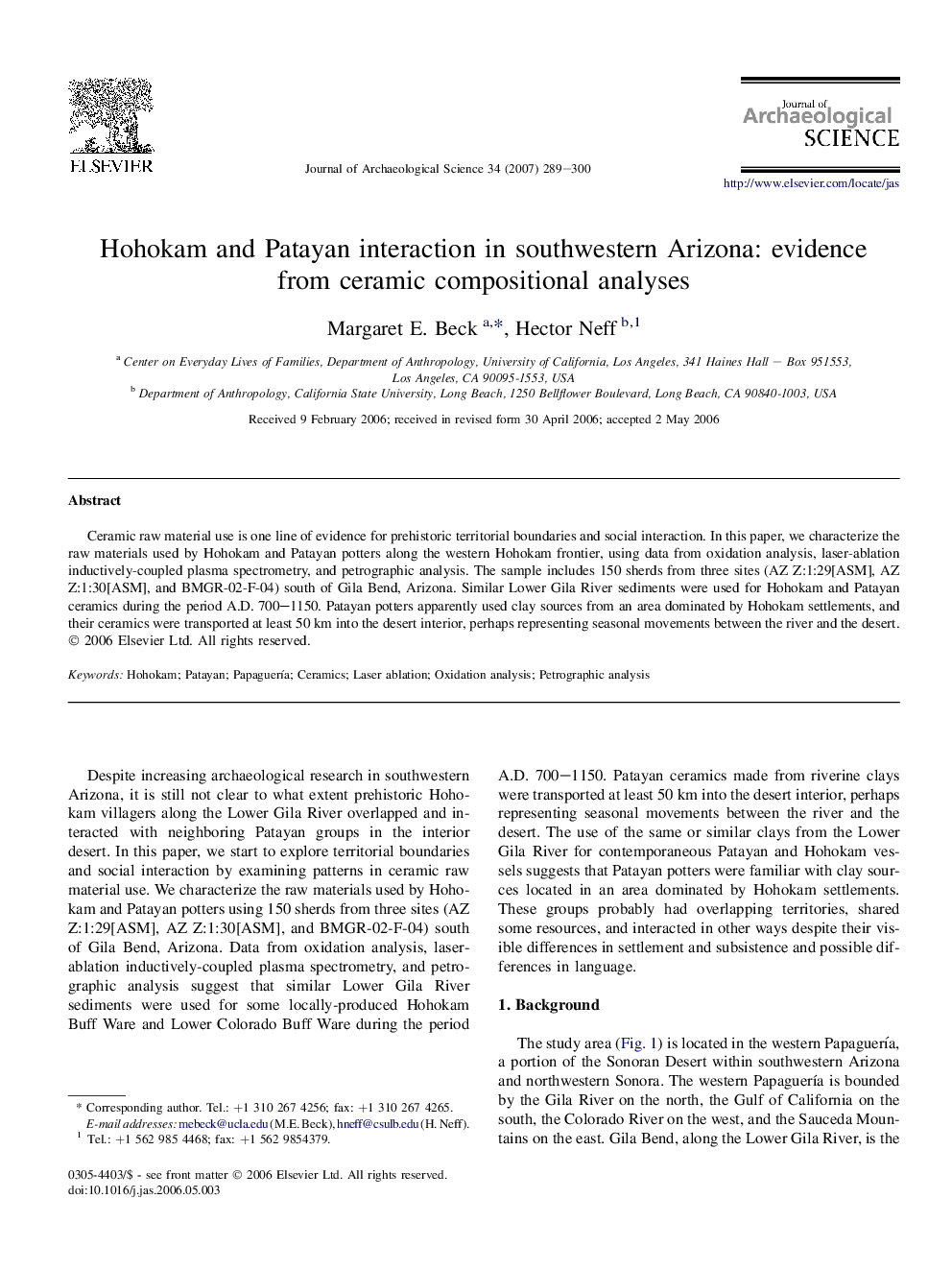| Article ID | Journal | Published Year | Pages | File Type |
|---|---|---|---|---|
| 1037699 | Journal of Archaeological Science | 2007 | 12 Pages |
Abstract
Ceramic raw material use is one line of evidence for prehistoric territorial boundaries and social interaction. In this paper, we characterize the raw materials used by Hohokam and Patayan potters along the western Hohokam frontier, using data from oxidation analysis, laser-ablation inductively-coupled plasma spectrometry, and petrographic analysis. The sample includes 150 sherds from three sites (AZ Z:1:29[ASM], AZ Z:1:30[ASM], and BMGR-02-F-04) south of Gila Bend, Arizona. Similar Lower Gila River sediments were used for Hohokam and Patayan ceramics during the period A.D. 700-1150. Patayan potters apparently used clay sources from an area dominated by Hohokam settlements, and their ceramics were transported at least 50Â km into the desert interior, perhaps representing seasonal movements between the river and the desert.
Related Topics
Physical Sciences and Engineering
Materials Science
Materials Science (General)
Authors
Margaret E. Beck, Hector Neff,
